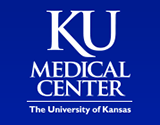Tocilizumab in the Treatment of Refractory Polymyositis and Dermatomyositis
| Status: | Recruiting |
|---|---|
| Conditions: | Skin and Soft Tissue Infections, Nephrology |
| Therapuetic Areas: | Dermatology / Plastic Surgery, Nephrology / Urology |
| Healthy: | No |
| Age Range: | 18 - Any |
| Updated: | 8/19/2018 |
| Start Date: | October 1, 2014 |
| End Date: | January 31, 2020 |
| Contact: | Chester V. Oddis, MD |
| Email: | cvo5@pitt.edu |
| Phone: | 412-383-8861 |
The purpose of this multi-center pilot study is to determine if the drug tocilizumab
(Actemra) is effective in the treatment of patients with refractory adult polymyositis (PM)
and dermatomyositis (DM).
(Actemra) is effective in the treatment of patients with refractory adult polymyositis (PM)
and dermatomyositis (DM).
Although there are several studies supporting the efficacy of tocilizumab (TCZ) in Rheumatoid
Arthritis (RA) and systemic onset juvenile idiopathic arthritis, it's use in other autoimmune
disorders has also been propose. A consensus statement on blocking the effects of IL-6 in RA
and other autoimmune conditions has been recently published. IL-6 is involved in the growth
and differentiation of many inflammatory cells. In addition to its initial role in triggering
B-cell stimulating factor, it also induces T cell growth and differentiation and plays a
critical role in both adaptive and innate immune responses. IL-6, produced by many cells
including T cells, B cells, monocytes and endothelial cells, binds to its receptor (IL-6R)
and subsequently triggers several intracellular pathways leading to the release of
inflammatory mediators and stimulation of the immune system. Inhibition of IL-6 has been
studied in phase II and III clinical trials of RA. It has led to a decrease in acute phase
reactants and other indicators of chronic inflammation. IL-6 is also a potential therapeutic
target in systemic sclerosis, and since IL-6 induces differentiation of B cells into antibody
forming cells and contributes to T cells transforming into effector cells, its use in
Systemic Lupus erythematosus (SLE) has also been suggested.
The use of TCZ in myositis proposed in this protocol is supported by the aforementioned
rationale and its efficacy in other rheumatologic disorders. Patients with refractory
polymyositis (PM) were treated with tocilizumab and responded favorably. In dermatomyositis,
tissue inflammation implicates soluble cytokine networks contributing to disease
pathogenesis. Work on a mouse model of myositis noted IL-6 as a mediator of muscle
inflammation. Other investigators studying peripheral blood samples and clinical data on both
adult and juvenile dermatomyositis (DM) noted that serum levels of IL-6 were significantly
correlated with disease activity. In this same study, correlations between serum IL-6 levels
and both the type I interferon gene and chemokine signatures were also identified in DM.
These authors suggest that the coordinated dysregulation of IL-6 production and Type I
interferon signaling implicates these pathways as contributing to disease pathogenesis in DM.
In a mouse model of PM, C protein-induced myositis (CIM), the pathology reportedly mimics
that seen in human PM. Mice were treated with anti-IL-6 receptor monoclonal antibodies or
control antibodies and muscle tissue was histologically and immunohistochemically analyzed.
CIM was ameliorated in this mouse model implicating IL-6 in the development of myositis.
These results not only identified this model as useful to understanding PM but they suggest
that IL-6 blockade be considered as a new therapeutic approach in the treatment of myositis.
Thus, the collective findings described above provide evidence for the involvement of IL-6 in
the pathogenesis of both adult PM and DM as well as supporting its role from animal models
and human studies.
Arthritis (RA) and systemic onset juvenile idiopathic arthritis, it's use in other autoimmune
disorders has also been propose. A consensus statement on blocking the effects of IL-6 in RA
and other autoimmune conditions has been recently published. IL-6 is involved in the growth
and differentiation of many inflammatory cells. In addition to its initial role in triggering
B-cell stimulating factor, it also induces T cell growth and differentiation and plays a
critical role in both adaptive and innate immune responses. IL-6, produced by many cells
including T cells, B cells, monocytes and endothelial cells, binds to its receptor (IL-6R)
and subsequently triggers several intracellular pathways leading to the release of
inflammatory mediators and stimulation of the immune system. Inhibition of IL-6 has been
studied in phase II and III clinical trials of RA. It has led to a decrease in acute phase
reactants and other indicators of chronic inflammation. IL-6 is also a potential therapeutic
target in systemic sclerosis, and since IL-6 induces differentiation of B cells into antibody
forming cells and contributes to T cells transforming into effector cells, its use in
Systemic Lupus erythematosus (SLE) has also been suggested.
The use of TCZ in myositis proposed in this protocol is supported by the aforementioned
rationale and its efficacy in other rheumatologic disorders. Patients with refractory
polymyositis (PM) were treated with tocilizumab and responded favorably. In dermatomyositis,
tissue inflammation implicates soluble cytokine networks contributing to disease
pathogenesis. Work on a mouse model of myositis noted IL-6 as a mediator of muscle
inflammation. Other investigators studying peripheral blood samples and clinical data on both
adult and juvenile dermatomyositis (DM) noted that serum levels of IL-6 were significantly
correlated with disease activity. In this same study, correlations between serum IL-6 levels
and both the type I interferon gene and chemokine signatures were also identified in DM.
These authors suggest that the coordinated dysregulation of IL-6 production and Type I
interferon signaling implicates these pathways as contributing to disease pathogenesis in DM.
In a mouse model of PM, C protein-induced myositis (CIM), the pathology reportedly mimics
that seen in human PM. Mice were treated with anti-IL-6 receptor monoclonal antibodies or
control antibodies and muscle tissue was histologically and immunohistochemically analyzed.
CIM was ameliorated in this mouse model implicating IL-6 in the development of myositis.
These results not only identified this model as useful to understanding PM but they suggest
that IL-6 blockade be considered as a new therapeutic approach in the treatment of myositis.
Thus, the collective findings described above provide evidence for the involvement of IL-6 in
the pathogenesis of both adult PM and DM as well as supporting its role from animal models
and human studies.
Inclusion Criteria:
Patients will be included in the trial based on the following criteria:
1. Definite or probable PM or DM by the criteria of Bohan and Peter (as modified by
IMACS) in adults over the age of 18. We will also allow enrollment of JDM patients
(considered to have DM) over the age of 18 who otherwise meet the inclusion criteria
stipulated below.
2. Subjects must either have the classic rash(es) of DM (heliotrope, Gottron sign or
Gottron papules), possess one of the myositis-associated autoantibodies (e.g.
anti-synthetase, anti-SRP, anti-Mi-2, anti-PM-Scl, anti TIF1-γ etc.), or have the
diagnosis of PM agreed upon by a 3-member Adjudication Committee consisting of a
rheumatologist, neurologist and neuromuscular pathologist.
3. Refractory myositis patients are defined (see Section 3.1.1) as having failed (or
considered intolerant to) an adequate course of glucocorticoids or having failed
glucocorticoids and at least one other immunosuppressive (IS) or immunomodulatory
agent (e.g. methotrexate, azathioprine, cyclosporine, tacrolimus, mycophenolate
mofetil, cyclophosphamide, IVIg, anti-TNF agents, and rituximab).
4. Subjects with an MMT-8 score ≤ 66 (see Appendix B) must also have at least 2 other
core set measures meeting the criteria listed below.
5. Subjects with an MMT-8 score > 66 must have at least 3 other core set measures meeting
the criteria listed below and a global extramuscular VAS score on the MDAAT ≥ 5cm on a
10cm scale.
6. Criteria for core set measures for study entry:
1. Patient global VAS with a minimum value of 2.0cm on a 10cm scale.
2. MD global VAS with a minimum value of 2.0cm on a 10cm scale.
3. HAQ disability index with a minimum value of 0.25
4. Elevation of at least one of the muscle enzymes (CK, AST, ALT, aldolase, LDH) at
a minimum level of 1.3x the ULN.
5. Global extramuscular disease activity score with a minimum value of 1.0cm on a
10cm VAS scale on the Myositis Disease Activity Assessment Tool (MDAAT).
7. If on prednisone, the dose must be stable for 4 weeks prior to the screening visit.
Tapering of the prednisone dose will only be allowed after the subject meets the DOI
or if safety/toxicity issues supervene.
1. Prednisone Tapering: Prednisone should be held constant without tapering or
escalation (unless there is a serious adverse event or disease flare) until the
subject has achieved the DOI. Then, tapering of prednisone may commence using a
schedule approximating a 20-25% taper of the existing dose every 4 weeks based on
the clinical judgment of the clinical site investigator. Prednisone tapering
using the aforementioned guidelines can be commenced at any time if: (a) the
patient achieves the DOI or (b) there are complications or circumstances that, in
the clinical site investigator's opinion, necessitate the tapering of
corticosteroids.
2. Prednisone at Entry: It is also recommended that patients be on less than
1mg/kg/day of prednisone at study entry.
3. Prednisone Dosing During Flare: If in the clinical site investigator's opinion
there are complications or worsening of disease that necessitate an increase in
the prednisone dose then the smallest reasonable increase should be considered.
8. If an IS agent was discontinued prior to the screening visit there may be a washout as
stipulated below or individualized according to the patients treating physician:
1. 4 week washout for methotrexate
2. 8 week washout for any other IS agent (e.g. azathioprine, cyclosporine,
tacrolimus, mycophenolate mofetil)
3. 3 month washout for leflunomide, IVIg or cyclophosphamide
4. 6 month washout for rituximab
5. 8 week washout for infliximab or adalimumab
6. 2 week washout for etanercept
7. 1 week washout for anakinra
9. If an IS agent is continued, the dose must remain stable for 4 weeks prior to
enrollment and at least until the DOI is met or if safety/toxicity issues supervene.
Concomitant IS medications permitted include methotrexate, azathioprine, cyclosporine,
mycophenolate mofetil, and tacrolimus. IVIg will also be allowed as an
immunomodulatory agent. Careful patient safety monitoring along with ACR guidelines
for monitoring these medications will be employed if those toxicity monitoring
laboratory studies are not already being assessed as part of this trial. No
concomitant biologic agents are allowed (rituximab, anti-TNFs, abatacept) as well as
cyclophosphamide or tofacitinib as concomitant immunosuppressive agents. Investigators
will be certain to assess and classify adverse events as being secondary to either
study drug as well as any concomitant immunosuppressive agent(s). That is, there
should be attribution of the AE to the appropriate agent.
10. Normal organ function, except if abnormal due to the disease under investigation
11. Men and women of reproductive potential must agree to use an acceptable method of
birth control during treatment and for twelve months after completion of treatment.
12. Subject has provided written informed consent.
Exclusion Criteria:
A patient will be excluded if any of the following criteria are met:
1. Subjects under the age of 18.
2. Severe muscle damage defined as a global muscle damage score >5 on a 10cm VAS scale on
the Muscle Damage Index (MDI).
3. Evidence of active malignant disease, malignancies diagnosed within the previous 5
years (including hematological malignancies and solid tumors, except basal and
squamous cell carcinoma of the skin or carcinoma in situ of the cervix uteri that has
been excised and cured), or breast cancer diagnosed within the previous 10 years
unless related to primary disease under investigation.
4. Known active current or history of recurrent bacterial, viral, fungal, mycobacterial
or other infections (including but not limited to tuberculosis and atypical
mycobacterial disease, Hepatitis B and C, and herpes zoster, but excluding fungal
infections of nail beds).
5. Any major episode of infection requiring hospitalization or treatment with IV
antibiotics within 4 weeks of screening or oral antibiotics within 2 weeks prior to
screening.
6. Active TB requiring treatment within the previous 3 years. Patients should be screened
for latent TB and, if positive, treated following local practice guidelines prior to
initiating TCZ. Patients treated for tuberculosis with no recurrence in 3 years are
permitted.
7. Primary or secondary immunodeficiency (history of or currently active) unless related
to primary disease under investigation.
8. Pregnant women or nursing (breast feeding) mothers.
9. Patients with reproductive potential not willing to use an effective method of
contraception.
10. History of alcohol, drug or chemical abuse within 1 year prior to screening or any
medical condition or physical or psychological state that the PI feels would not allow
the subject to safely complete the study.
11. Initiation of an exercise program for muscle strengthening within 4 weeks of the
screening visit or initiation of a muscle strengthening exercise program during the
study.
12. Major surgery (including joint surgery) within 8 weeks prior to screening or planned
major surgery within 6 months following randomization.
13. Treatment with any investigational agent within 4 weeks (or 5 half-lives of the
investigational drug, whichever is longer) of screening.
14. Previous treatment with the following cell-depleting therapies, including
investigational agents or approved therapies: CAMPATH, anti-CD4, anti-CD5, and
anti¬CD3.
15. Immunization with a live/attenuated vaccine within 4 weeks prior to baseline.
16. Previous treatment with TCZ.
17. History of severe allergic or anaphylactic reactions to human, humanized or murine
monoclonal antibodies.
18. Evidence of serious uncontrolled concomitant cardiovascular, nervous system, pulmonary
(including obstructive pulmonary disease), renal, hepatic, endocrine (include
uncontrolled diabetes mellitus) or gastrointestinal disease (including complicated
diverticulitis, ulcerative colitis, or Crohn's disease.)
19. Patients with lack of peripheral venous access.
20. Body weight of > 150 kg.
21. Abnormal laboratory values noted below:
1. Serum creatinine > 1.6 mg/dL in female patients and > 1.9 mg/dL in male patients.
Patients with serum creatinine values exceeding limits may be eligible for the
study if their estimated glomerular filtration rates (GFR) are >30.
2. Platelet count < (100,000/mm3); hemoglobin < 8.5 g/dl and WBC count < 3000/mm3;
Absolute Neutrophil Count < 2.0 x 109/L (2000/mm3); Absolute Lymphocyte Count <
0.5 x 109/L (500/mm3)
22. Positive hepatitis BsAg or hepatitis C antibody
We found this trial at
7
sites
3901 Rainbow Blvd
Kansas City, Kansas 66160
Kansas City, Kansas 66160
(913) 588-5000

Principal Investigator: Richard J. Barohn, MD
Phone: 913-945-9932
University of Kansas Medical Center The University of Kansas Medical Center serves Kansas through excellence...
Click here to add this to my saved trials
8700 Beverly Blvd # 8211
Los Angeles, California 90048
Los Angeles, California 90048
(1-800-233-2771)

Principal Investigator: Swamy Venuturupalli, MD
Phone: 310-360-9197
Cedars Sinai Med Ctr Cedars-Sinai is known for providing the highest quality patient care. Our...
Click here to add this to my saved trials
4200 Fifth Ave
Pittsburgh, Pennsylvania 15260
Pittsburgh, Pennsylvania 15260
(412) 624-4141

Principal Investigator: Chester V. Oddis, MD
Phone: 412-383-8674
University of Pittsburgh The University of Pittsburgh is a state-related research university, founded as the...
Click here to add this to my saved trials
Great Neck, New York 11021
Principal Investigator: Galina Marder, MD
Phone: 516-708-2546
Click here to add this to my saved trials
8701 W Watertown Plank Rd
Milwaukee, Wisconsin
Milwaukee, Wisconsin
(414) 955-8296

Principal Investigator: David Gazeley, MD
Phone: 414-955-7022
Medical College of Wisconsin The Medical College (MCW) of Wisconsin is a major national research...
Click here to add this to my saved trials
2201 West End Ave
Nashville, Tennessee 37232
Nashville, Tennessee 37232
(615) 322-7311

Principal Investigator: Leslie Crofford, MD
Phone: 615-525-7667
Vanderbilt University Vanderbilt offers undergraduate programs in the liberal arts and sciences, engineering, music, education...
Click here to add this to my saved trials
Rochester, Minnesota 55905
Principal Investigator: Floranne Ernste, MD
Phone: 507-284-3695
Click here to add this to my saved trials